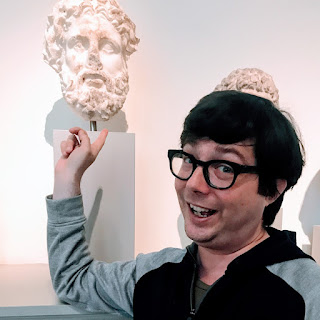The Amtrak Station in Cleveland is spartan by design.
Why Take an Amtrak Train?
Why take a train when even a car is faster? For me, train travel is the most relaxing way to travel even with possible delays and motion sickness. I like surrendering myself to the massive stretch of rails, freeing myself from the burden of having to operate a vehicle myself. Who wants to drive when I can cozy up with a book in my near-better-than-airline seat (preferably a window).
Riding the Lake Shore Limited
 My last journey took me from New York Pennsylvania Station in midtown Manhattan to the shores of Lake Erie where the city of Cleveland lies amidst the lake and the Cuyahoga River. I had to travel to Ohio for my mother — she’s having surgery at the Cleveland Clinic. So I took family leave from school to be with her. I left New York on an early Sunday afternoon and arrived in Cleveland in the wee hours of the morning at 3:30 — before the sun had come up. It’s a long stretch — but for those going to the line’s terminus in Chicago, even longer.
My last journey took me from New York Pennsylvania Station in midtown Manhattan to the shores of Lake Erie where the city of Cleveland lies amidst the lake and the Cuyahoga River. I had to travel to Ohio for my mother — she’s having surgery at the Cleveland Clinic. So I took family leave from school to be with her. I left New York on an early Sunday afternoon and arrived in Cleveland in the wee hours of the morning at 3:30 — before the sun had come up. It’s a long stretch — but for those going to the line’s terminus in Chicago, even longer.
Arriving in Cleveland to See My Mom
The train station in Cleveland sits between FirstEnergy Stadium and a line of tracks. Mostly freight. So it is not easy to walk to from downtown. It is close to the light rail Waterfront line at West Third Street. The building is utilitarian; there are bathrooms and when Amtrak trains are running there is a station attendant, and you can get automated latte from the coffee vending machine. When I arrived, several Mennonites were waiting for the eastbound train. I took a rest for a few minutes then took a Lyft to the hotel.
PDF Copy for Printing









